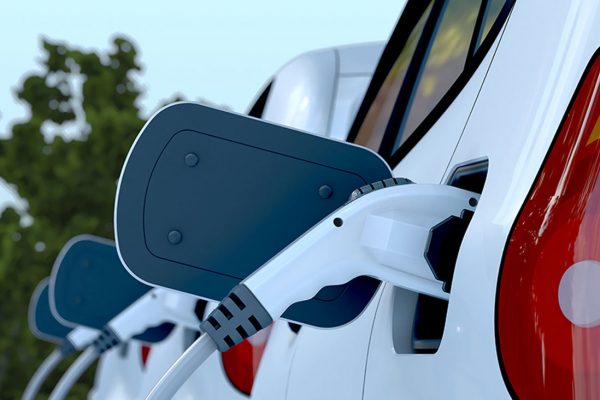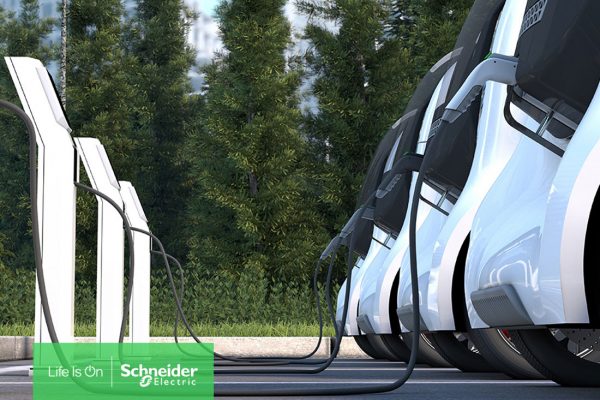Energy and mobility are the twin pillars of smart city transformation. Schneider Electric Chairman and CEO Jean-Pascal Tricoire and Enel Group CEO and GM Francesco Starace talk about electrification of transport at the crux of energy and mobility.

May 16th, 2019
As urbanisation increases — an additional 2.5 billion people will live in cities by 2050 — cities and suburbs will undergo significant transformations to create sustainable living conditions for their residents. Energy and mobility are the twin pillars of these transformations, and both will require radical adaptation to meet the demographic and economic growth without increasing congestion and pollution.
The question is whether policy-makers and business leaders can harness and combine them in ways that maximise their benefits for the environment and create greater efficiency and economic growth. The Fourth Industrial Revolution offers an unprecedented opportunity.
As electric vehicles (EV) become more affordable, some are predicting that they will constitute almost a third of new-car sales by the end of the next decade. Ride-sharing continues to surge, with estimates that by 2030, it will account for more than 25 per cent of all miles driven globally, up from 4 per cent today. These changes are just the first hints of what is to come as we will soon see autonomous vehicles (AV) and commercial fleets of EVs integrated as parts of everyday life. In the future, AVs will also cost significantly less per mile than vehicles with internal combustion engines for personal-use — by as much as 40 per cent — and could also reduce congestion and traffic incidents.
We are amid a global evolution toward energy systems that are cleaner and increasingly decentralised, with energy generated, stored, and distributed closer to the final customers, with renewables and storage technologies. At the same time, digitalisation will allow customers and electricity system operators to control where, when, and how electricity is being used and new business models to emerge. And finally, new and more energy uses are going to be electrified — mobility being one of the critical ones.
These trends have the potential to reinforce each other and actively contribute to make our cities smarter. Forward-thinking business leaders and policy-makers must act now to lay the foundation for sustainable innovation in urban environments — able to capture and combine these new trends.
Electric mobility is widely seen today as a way to improve air quality and meet climate goals but rarely is it integrated into a comprehensive vision for smarter cities. EVs continue to be associated to traditional ownership and use models, and still considered as just cars: the innovative uses and services associated to batteries or to the integration with smart buildings are ignored or at least not enough explored. Charging stations are still developed with limited or no consideration of the energy issues, or not exploiting enough digital technologies, over-complicating the customer experience. Their location will also inevitably change with the transition to shared and autonomous mobility.

“Electric Vehicles for Smarter Cities: The Future of Energy and Mobility”, a report from The World Economic Forum, developed in cooperation with Bain & Company, suggests the following three general principles:
The investment and infrastructure required to support electric mobility will vary significantly from one place to another. Any roadmap to electric mobility should be adapted to three main characteristics of the specific market: local infrastructure and design; energy system; and mobility culture and patterns. All relevant stakeholders should be engaged to collectively define a new paradigm for cities that go beyond the today’s industry divisions, in search for complementary municipal, regional, and national policies.
Electric taxis and public transportation will have a great impact in reducing carbon emissions. These types of vehicles are driven far more than personal-use vehicles, so commercial and public EV fleet development should be encouraged. For example, Schneider Electric and BMW are part of a consortium of companies in Bangkok that is partnering with King Mongkut’s University of Technology Thonburi to spur the use of electric vehicles across Thailand, initially through car sharing and a campus-based electric bus.
EV charging infrastructure should be developed along highways, at destination points, and close to public transportation nodes. This is critical for three reasons: first, to keep pace with current demand. Second, to address range anxiety issues by making charging stations accessible, convenient, and easy to locate. And, lastly, to promote the adoption of EVs in commercial and private markets.
In Hong Kong, the local government incentivises EV infrastructure developers by allowing them to integrate Octopus, a popular smart payment system also used to access public transportation. This gives EV drivers a convenient and familiar way to purchase energy and aims to encourage more people to drive EVs by ensuring the availability of a network of public charging stations.
The infrastructure should be deployed in combination with grid edge technologies — such as decentralised generation, storage, and smart buildings — and integrated into smart grids, while at the same time offering a digital end-to-end customer experience. This will magnify the benefits of grid edge technologies: increasing reliability, resilience, efficiency, and asset utilisation of the overall system; reducing CO2 emissions; creating new services for customers, and creating new jobs.

When these three general principles are followed, mobility assets and energy systems help each other.
EVs can be used as a decentralised energy resource and provide new, controllable storage capacity and electricity supply that is useful for the stability of the energy system. In markets where regulation allows EVs to be used as a source of flexibility, energy players start betting on this vision, with cars working as ‘batteries on wheels’.
For example, in a pilot project in Denmark, Enel and Nissan set up the first vehicle-to-grid (V2G) commercial hub: by selling frequency regulation services for system balancing purposes to the Danish transmission system operator (TSO), a car can generate around €1,500 in annual revenue.
New business models are possible, where the drivers and fleet operators of EVs could play as producer-consumers of energy services, such as vehicle-to-everything (V2x) and smart charging. These new energy services will create additional opportunities for revenue sharing between the vehicle owners and the energy suppliers that would reduce the total cost of ownership of the EVs and accelerate their market penetration.
At the EUREF Campus on the outskirts of Berlin, the EV charging stations are integrated into the local micro smart grid with solar and wind generation. The micro grid’s artificial intelligence and machine-to-machine learning capacity actively optimises EV charging.
It controls the charging demands to match the network capacity and sends energy surplus back to the grid based on dynamic pricing. This creates a system where electricity is supplied, stored, and potentially sent back actively and intelligently. In this context, all new constructions at the campus are sustainable buildings and as of 2014, the EUREF Campus had already met the German government’s climate targets for 2050.

The transformations happening in the fields of energy and mobility are inevitable, influenced by market factors and megatrends that are virtually unstoppable. Their convergence is the opportunity. Businesses have the chance to spearhead it in cities. Policymakers have the power to promote innovation and new ways of thinking in local governments that will make it possible.
On both fronts, the convergence of energy and mobility must be strategic, intentional, and guided, if cities and citizens are to receive the maximum benefits.
The energy sector will have to accelerate the path toward a cleaner, more digitalised and decentralised system, yet one that is more connected and customer-centric. Enabling dynamic pricing and creating new roles for network operators by redesigning the regulatory paradigm will be vital to this strategy.
The mobility sector will have the opportunity to develop new business models based on service and sharing models, and the new uses and services associated with EVs as decentralised energy resources.
Urban planners will need the support of energy and mobility-relevant stakeholders to define the optimal location of the publicly accessible charging infrastructure.
All stakeholders will be critical to ensure a seamless customer experience, by supporting the deployment of a flexible, open, and multiservice infrastructure.
The World Economic Forum’s new report provides a detailed overview of this unprecedented opportunity at the intersection of energy and mobility.
A searchable and comprehensive guide for specifying leading products and their suppliers
Keep up to date with the latest and greatest from our industry BFF's!

Marylou Cafaro’s first trendjournal sparked a powerful, decades-long movement in joinery designs and finishes which eventually saw Australian design develop its independence and characteristic style. Now, polytec offers all-new insights into the future of Australian design.

Create a configuration to suit your needs with this curved collection.

In the pursuit of an uplifting synergy between the inner world and the surrounding environment, internationally acclaimed Interior Architect and Designer Lorena Gaxiola transform the vibration of the auspicious number ‘8’ into mesmerising artistry alongside the Feltex design team, brought to you by GH Commercial.

Sub-Zero and Wolf’s prestigious Kitchen Design Contest (KDC) has celebrated the very best in kitchen innovation and aesthetics for three decades now. Recognising premier kitchen design professionals from around the globe, the KDC facilitates innovation, style and functionality that pushes boundaries.

We spoke with three architects currently practising in Canberra to investigate the city’s planned history and what it means to work in that shadow.

In this comment piece, Mike Day, partner at Hatch, draws on his three decades as an urban design leader to offer insights into how Australian cities could become fit for the future.

Hassell recently presented its gigantic Metro Tunnel Project at the World Architecture Festival (WAF) alongside collaborators Weston Williamson and RSHP. We spoke to Hassell principal Ingrid Bakker about the scale of the work and what’s driving the design.
The internet never sleeps! Here's the stuff you might have missed

Leading the field in terms of ergonomics, this high-end office furniture from Buro is also designed with the evolving needs of the modern workplace in mind.

Nazcaa boasts a statement design for a singular restaurant and it’s right at home on the Dubai hospitality scene.